
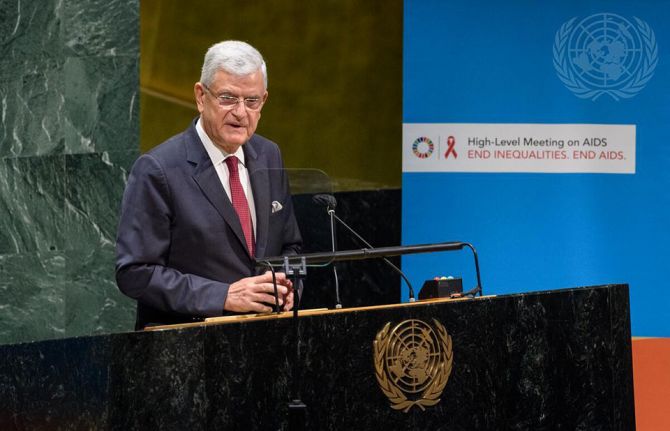
Press Release
New global pledge to end all inequalities faced by communities and people affected by HIV towards ending AIDS
08 June 2021 08 June 2021World leaders agree to reduce the annual number of new HIV infections to under 370 000 and AIDS-related deaths to 250 000, eliminate new HIV infections among children, end paediatric AIDS and eliminate all forms of HIV-related discrimination by 2025. They also committed to providing life-saving HIV treatment to 34 million people by 2025.
NEW YORK, 8 June 2021—United Nations Member States adopted a set of new and ambitious targets in a political declaration at the United Nations General Assembly High-Level Meeting on AIDS, taking place in New York, United States of America. If the international community reaches the targets, 3.6 million new HIV-infections and 1.7 million AIDS-related deaths will be prevented by 2030.
The political declaration calls on countries to provide 95% of all people at risk of acquiring HIV within all epidemiologically relevant groups, age groups and geographic settings with access to people-centred and effective HIV combination prevention options. It also calls on countries to ensure that 95% of people living with HIV know their HIV status, 95% of people who know their status to be on HIV treatment and 95% of people on HIV treatment to be virally suppressed.
“In this Decade of Action, if we are to deliver the 2030 Agenda for Sustainable Development all Member States must recommit to ending the AIDS epidemic by 2030,” said Volkan Bozkir, the President of the United Nations General Assembly.
“To end AIDS, we need to end the intersecting injustices that drive new HIV infections and prevent people from accessing services,” said Amina J. Mohammed, Deputy Secretary-General of the United Nations.
The political declaration notes with concern that key populations—gay men and other men who have sex with men, sex workers, people who inject drugs, transgender people and people in prisons and closed settings—are more likely to be exposed to HIV and face violence, stigma, discrimination and laws that restrict their movement or access to services. Member States agreed to a target of ensuring that less than 10% of countries have restrictive legal and policy frameworks that lead to the denial or limitation of access to services by 2025. They also committed to ensure that less than 10% of people living with, at risk of or affected by HIV face stigma and discrimination by 2025, including by leveraging the concept of undetectable = untransmittable (people living with HIV who have achieved viral suppression do not transmit HIV).
“I would like to thank Member States. They have adopted an ambitious political declaration to get the world back on track to ending the AIDS pandemic that has ravaged communities for 40 years,” said Winnie Byanyima, the UNAIDS Executive Director.
Expressing concern at the number of new HIV infections among adolescents, especially in sub-Saharan Africa, a commitment was made to reduce the number of new HIV infections among adolescent girls and young women to below 50 000 by 2025. Member States committed to eliminate all forms of sexual and gender-based violence, including intimate partner violence, by adopting and enforcing laws that address the multiple and intersecting forms of discrimination and violence faced by women living with, at risk of and affected by HIV. They pledged to reduce to no more than 10% the number of women, girls and people affected by HIV who experience gender-based inequalities and sexual and gender-based violence by 2025. In addition, commitments were made to ensure that all women can exercise their right to sexuality, including their sexual and reproductive health, free of coercion, discrimination and violence.
Countries were also urged to use national epidemiological data to identify other priority populations who are at higher risk of exposure to HIV, which may include people with disabilities, ethnic and racial minorities, indigenous peoples, local communities, people living in poverty, migrants, refugees, internally displaced people, men and women in uniform and people in humanitarian emergencies and in conflict and post-conflict situations. Countries also committed to ensure that 95% of people living with, at risk of and affected by HIV are protected against pandemics, including COVID-19.
“The stark inequalities exposed by the colliding pandemics of HIV and COVID-19 are a wake-up call for the world to prioritize and invest fully in realizing the human right to health for all without discrimination,” said Ms Byanyima.
Member States also committed to increase and fully fund the AIDS response. They agreed to invest US$ 29 billion annually by 2025 in low- and middle-income countries. This includes investing at least US$ 3.1 billion towards societal enablers, including the protection of human rights, reduction of stigma and discrimination and law reform. They also committed to include peer-led HIV service delivery, including through social contracting and other public funding mechanisms.
Calling for expanding access to the latest technologies for tuberculosis (TB) prevention, screening, diagnosis, treatment and vaccination, Member States agreed to ensure that 90% of people living with HIV receive preventive treatment for TB and reduce AIDS-related TB deaths by 80% by 2025. Countries also committed to ensure the global accessibility, availability and affordability of safe, effective and quality-assured medicines, including generics, vaccines, diagnostics and other health technologies to prevent, diagnose and treat HIV infection, its coinfections and other comorbidities through the use of existing flexibilities under the Agreement on Trade-Related Aspects of Intellectual Property Rights (TRIPS) and ensure that intellectual property rights provisions in trade agreements do not undermine the existing flexibilities as outlined in the Doha Declaration on the TRIPS Agreement and Public Health.
“The AIDS response is still leaving millions behind—LGBTI people, sex workers, people who use drugs, migrants and prisoners, teenagers, young people, women and children—who also deserve an ordinary life, with the same rights and dignity enjoyed by most people in this room,” said Yana Panfilova, a woman living with HIV and member of the Global Network of People Living with HIV.
The high-level meeting is being attended in-person and virtually by heads of state and government, ministers and delegates in New York, people living with HIV, civil society organizations, key populations and communities affected by HIV, international organizations, scientists and researchers and the private sector. UNAIDS supported regional consultations and the participation of civil society in the high-level meeting. Civil society organizations called on Member States to adopt a stronger resolution.
“While we have made some significant progress as a global community, we are still missing the mark and people are paying the price with their lives. There’s one single reason we are missing our goal: it’s inequality,” said Charlize Theron, Founder of the Charlize Theron Africa Outreach Project and a United Nations Messenger of Peace.
Member States also committed to support and leverage the 25 years of experience and expertise of the Joint United Nations Programme on HIV/AIDS (UNAIDS) and committed to fully fund the programme so that it can continue to lead global efforts against AIDS and support efforts for pandemic preparedness and global health.
In accordance with the Global AIDS Strategy 2021–2026: End Inequalities, End AIDS, adopted by consensus on 25 March 2021 by the UNAIDS Programme Coordinating Board, as well as the report of the United Nations Secretary-General, Addressing Inequalities and Getting Back on Track to End AIDS by 2030, issued on 31 March 2021, UNAIDS would have welcomed even stronger commitments on comprehensive sexuality education, sexual and reproductive health and rights, and sexual orientation and gender identity, unqualified acceptance of evidence-based HIV prevention options, such as harm reduction, a call for the decriminalization of the transmission of HIV, sex work, drug use and laws that criminalize same-sex sexual relationships and further flexibilization of intellectual property rules for access to life-saving medicines, vaccines and technologies.
In 2020, 27.4 million of the 37.6 million people living with HIV were on treatment, up from just 7.8 million in 2010. The roll-out of affordable, quality treatment is estimated to have averted 16.2 million deaths since 2001. AIDS-related deaths have fallen by 43% since 2010, to 690 000 in 2020. Progress in reducing new HIV infections has also been made, but has been markedly slower—a 30% reduction since 2010, with 1.5 million people newly infected with the virus in 2020, compared to 2.1 million in 2010.
UNAIDS
The Joint United Nations Programme on HIV/AIDS (UNAIDS) leads and inspires the world to achieve its shared vision of zero new HIV infections, zero discrimination and zero AIDS-related deaths. UNAIDS unites the efforts of 11 UN organizations—UNHCR, UNICEF, WFP, UNDP, UNFPA, UNODC, UN Women, ILO, UNESCO, WHO and the World Bank—and works closely with global and national partners towards ending the AIDS epidemic by 2030 as part of the Sustainable Development Goals. Learn more at unaids.org and connect with us on Facebook, Twitter, Instagram and YouTube.
Contact
UNAIDS GenevaSophie Barton-Knott
tel. +41 79 514 68 96
bartonknotts@unaids.org
UNAIDS Media
tel. +41 22 791 4237
communications@unaids.org
Watch Winnie Byanyima's full speech

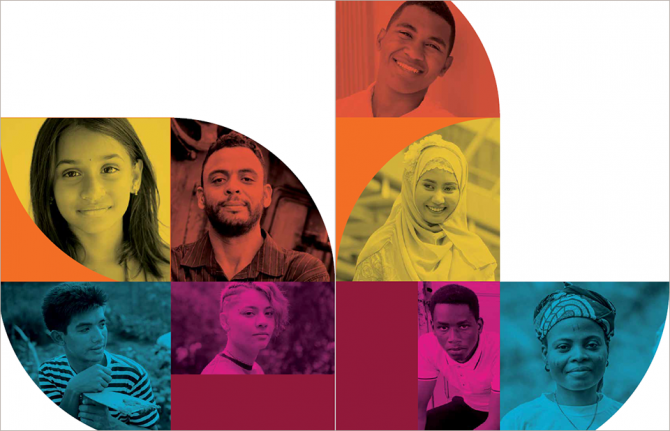
Press Release
Forty years on and new UNAIDS report gives evidence that we can end AIDS
03 June 2021 03 June 2021UNAIDS urges world leaders to adopt a bold political declaration on HIV at the United Nations General Assembly High-Level Meeting on AIDS, being held in New York and online next week, and to commit to achieving a new set of targets for 2025 to end AIDS by 2030
NEW YORK/GENEVA, 3 June 2021—Four decades after the first cases of AIDS were reported, new data from UNAIDS show that dozens of countries achieved or exceed the 2020 targets set by the United Nations General Assembly in 2016—evidence that the targets were not just aspirational but achievable.
The report shows that countries with progressive laws and policies and strong and inclusive health systems have had the best outcomes against HIV. In those countries, people living with and affected by HIV are more likely to have access to effective HIV services, including HIV testing, pre-exposure prophylaxis (medicine to prevent HIV), harm reduction, multimonth supplies of HIV treatment and consistent, quality follow-up and care.
“High-performing countries have provided paths for others to follow,” said Winnie Byanyima, the Executive Director of UNAIDS. “Their adequate funding, genuine community engagement, rights-based and multisectoral approaches and the use of scientific evidence to guide focused strategies have reversed their epidemics and saved lives. These elements are invaluable for pandemic preparedness and responses against HIV, COVID-19 and many other diseases.”
Globally, the report shows that the number of people on treatment has more than tripled since 2010. In 2020, 27.4 million of the 37.6 million people living with HIV were on treatment, up from just 7.8 million in 2010. The roll-out of affordable, quality treatment is estimated to have averted 16.2 million deaths since 2001.
Deaths have fallen in large part due to the roll-out of antiretroviral therapy. AIDS-related deaths have fallen by 43% since 2010, to 690 000 in 2020. Progress in reducing new HIV infections has also been made, but has been markedly slower—a 30% reduction since 2010, with 1.5 million people newly infected with the virus in 2020 compared to 2.1 million in 2010.
The report underscores that countries with punitive laws and that do not take a rights-based approach to health punish, ignore, stigmatize and leave key populations—which make up 62% of new HIV infections worldwide—on the margins and out of reach of HIV services. For example, almost 70 countries worldwide criminalize same-sex sexual relationships. Gay men and other men who have sex with men, sex workers, transgender people, people in prison and people who inject drugs are left with little or no access to health or social services, allowing HIV to spread among the most vulnerable in society.
Young women in sub-Saharan Africa also continue to be left behind. Six out of seven new HIV infections among adolescents aged 15–19 years in the region are among girls. AIDS-related illnesses remain the leading cause of death among women aged 15–49 years in sub-Saharan Africa.
COVID-19 has shown the fragility of the health and development gains made over the past decades and has exposed glaring inequalities. To get the world on track to end AIDS by 2030, the global AIDS community and UNAIDS have used an inequalities lens to develop an ambitious and achievable strategy with new targets to reach by 2025. Ending inequalities requires HIV responses that can reach the populations currently being left behind.
If reached, the targets will bring HIV services to 95% of the people who need them, reduce annual HIV infections to fewer than 370 000 and AIDS-related deaths to fewer than 250 000 by 2025. This will require an investment of US$ 29 billion a year by 2025. Each additional US$ 1 of investment in implementing the global AIDS strategy will bring a return of more than US$ 7 in health benefits.
UNAIDS urges the United Nations General Assembly to commit to the targets in a new political declaration on HIV at the fifth United Nations General Assembly High-Level Meeting on AIDS, taking place from 8 to 10 June 2021.
“The world cannot afford to underinvest in pandemic preparedness and responses,” said Ms Byanyima. “I strongly urge the United Nations General Assembly to seize the moment and commit to taking the actions needed to end AIDS.”
UNAIDS
The Joint United Nations Programme on HIV/AIDS (UNAIDS) leads and inspires the world to achieve its shared vision of zero new HIV infections, zero discrimination and zero AIDS-related deaths. UNAIDS unites the efforts of 11 UN organizations—UNHCR, UNICEF, WFP, UNDP, UNFPA, UNODC, UN Women, ILO, UNESCO, WHO and the World Bank—and works closely with global and national partners towards ending the AIDS epidemic by 2030 as part of the Sustainable Development Goals. Learn more at unaids.org and connect with us on Facebook, Twitter, Instagram and YouTube.
Watch

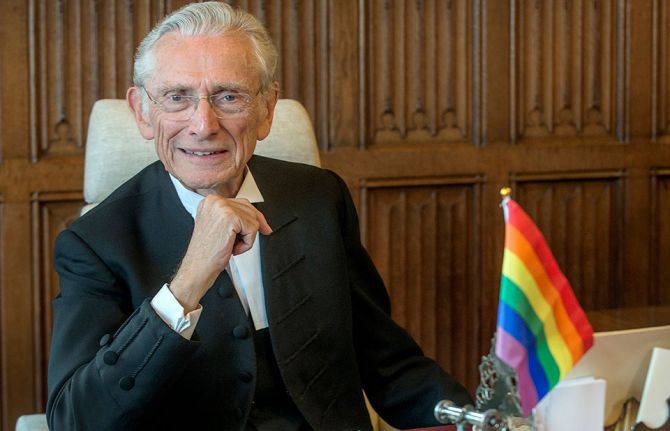
Press Release
UNAIDS welcomes Lord Fowler as an ambassador
30 April 2021 30 April 2021GENEVA, 30 April 2021—Norman Fowler, the pioneering United Kingdom Secretary of State for Health, human rights campaigner and respected Lords Speaker, will champion law reform, health for all and girls’ education worldwide to help end HIV as an ambassador for UNAIDS.
Lord Fowler, who steps down as Lord Speaker at the end of April, will take up his new role as an advocate on AIDS in May 2021.
In his new role, he will focus on engaging leaders across the world in advancing three transformational shifts that are central to ending AIDS: ending punitive laws against and stigmatization of lesbian, gay, bisexual, transgender and intersex (LGBTI) people; ensuring universal access to health care; and ensuring the empowerment and education of all girls so that they finish secondary school and benefit from a dramatically reduced risk of acquiring HIV.
Lord Fowler served as the United Kingdom’s Secretary of State for Health from the beginning of the HIV epidemic. He has decades of service at the highest levels of government and has been a champion for people affected by HIV and for the human rights of LGBTI people.
The UNAIDS Executive Director, Winnie Byanyima, said, “We can beat AIDS, but only through bold action by leaders. Lord Fowler is respected as a great parliamentarian and courageous leader across the world. He has delivered bold change to fight AIDS, and can help other leaders to do the same. We are so grateful to Lord Fowler for supporting us in this way.”
Lord Fowler said, “As I said when I announced that I was stepping down as Lord Speaker, I am not retiring, only resigning. I am determined to see the end of AIDS, and to see the end of the inequalities that stand in the way of the end of AIDS. We have come so far but this last mile is the most challenging one. The COVID-19 crisis is not a reason to step back but a reason to step up and beat AIDS.”
This is a key year for the HIV response, which marks the fortieth anniversary of the discovery of HIV. This year will also see the United Nations High-Level Meeting on AIDS, at which leaders will set out the steps they will take to achieve the end of AIDS by 2030.
UNAIDS
The Joint United Nations Programme on HIV/AIDS (UNAIDS) leads and inspires the world to achieve its shared vision of zero new HIV infections, zero discrimination and zero AIDS-related deaths. UNAIDS unites the efforts of 11 UN organizations—UNHCR, UNICEF, WFP, UNDP, UNFPA, UNODC, UN Women, ILO, UNESCO, WHO and the World Bank—and works closely with global and national partners towards ending the AIDS epidemic by 2030 as part of the Sustainable Development Goals. Learn more at unaids.org and connect with us on Facebook, Twitter, Instagram and YouTube.

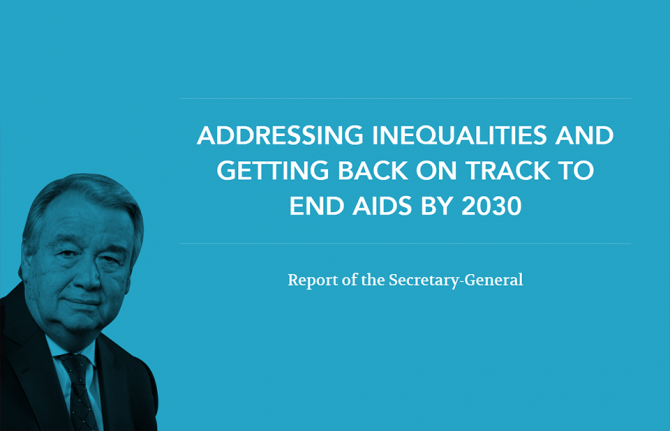
Press Release
United Nations Secretary-General calls for a greater focus on ending inequalities to end AIDS
30 April 2021 30 April 2021Forty years since the first AIDS cases were reported and just weeks before the United Nations General Assembly High-Level Meeting on AIDS, the United Nations Secretary-General has released a new report with recommendations and targets to get the world back on track to end AIDS
NEW YORK, 30 April 2021—The United Nations Secretary-General, António Guterres, has warned that despite intensive action and progress made against HIV in some places and population groups, HIV epidemics continue to expand in others and issued a set of 10 key recommendations.* If followed by all countries, this will end the AIDS pandemic as a public health threat by 2030 as part of the Sustainable Development Goals. In a new report, Addressing inequalities and getting back on track to end AIDS by 2030, the United Nations Secretary-General urges the world to address the inequalities that are slowing progress.
“It is imperative to break out of an increasingly costly and unsustainable cycle of achieving some progress against HIV but ultimately not enough to bring about an end to the pandemic,” said Mr Guterres in the report. “Inequalities are the key reason why the 2020 global targets were missed. By ending inequalities, transformative outcomes can be achieved for people living with HIV, communities and countries.”
The global targets set out in the General Assembly’s 2016 Political Declaration on Ending AIDS were missed by a long way, allowing the AIDS pandemic to grow in many regions and countries. The staggering 1.7 million new HIV infections that occurred in 2019 are more than three times higher than the 2020 target of less than 500 000 new infections. In addition, the 690 000 AIDS-related deaths in 2019 far exceed the 2020 target of reducing deaths to fewer than 500 000 a year.
“Ending AIDS as a public health threat by 2030 is still within reach—many countries are showing that rapid progress against HIV is possible when evidence-informed strategies and human rights-based approaches are adopted,” said UNAIDS Executive Director Winnie Byanyima. “But it requires bold political leadership to challenge and address the social injustices and inequalities that continue to make certain groups of people and entire communities highly vulnerable to HIV infection.”
The report notes that COVID-19 has caused additional setbacks. The United Nations Secretary-General warned that COVID-19 is not an excuse for missing AIDS targets, but rather a stark warning to the countries that they can no longer afford to underinvest in pandemic preparedness and responses.
At the same time, the COVID-19 pandemic has underscored the many spill-over benefits of HIV investments in health and development. Community-led service delivery pioneered by the HIV response is helping to overcome the extraordinary impediments created by COVID-19.
The set of 10 recommendations to get the world back on track include: addressing inequalities and reaching all people living with or at risk of HIV infection to reduce the annual new HIV infections to under 370 000 and annual AIDS-related deaths to under 250 000 by 2025; prioritizing HIV prevention to ensure that 95% of people at risk of HIV infection have access to effective HIV prevention options by 2025; and eliminating new HIV infections among children.
The report underscores that addressing social and structural factors that perpetuate inequalities is key. It highlights, for example, how gender inequality, underpinned by harmful gender norms, restricts women’s use of HIV and sexual and reproductive health services by perpetuating gender-based violence and limiting decision-making power, including the ability of women and girls to refuse unwanted sex, negotiate safer sex and mitigate HIV risk.
It also shows how vulnerable, marginalized and criminalized communities, such as gay men and other men who have sex with men, people who use drugs, sex workers, transgender people, prisoners and migrants, also remain at higher risk of HIV infection than the general population because they are not receiving essential information and HIV treatment, prevention and care services.
The United Nations Secretary-General describes how communities of people living with, at risk of and affected by HIV are the backbone of the HIV response. Initiatives led by people living with HIV, women, key populations, young people and other affected communities have identified and addressed key inequalities and service gaps, advocated for the rights of their constituents and expanded the reach, scale and quality of health services.
In the report, Mr Guterres applauds UNAIDS’ recently adopted Global AIDS Strategy 2021–2026: End Inequalities, End AIDS. “The lessons from the countries, cities and communities that successfully fast-tracked their HIV responses over the last five years are at the heart of the UNAIDS Global AIDS Strategy 2021–2026,” said Mr Guterres. “The global AIDS community and UNAIDS have used an inequalities lens to develop the strategy, with new targets that are ambitious, granular and tailored to reach the furthest behind first.”
The report comes 25 years after the creation of UNAIDS and describes how COVID-19 has exposed social inequalities and health system weaknesses. The United Nations Secretary-General says that the world should leverage the experience from responding to the AIDS pandemic to strengthen health systems across the world and improve pandemic preparedness. He also calls for enhanced global solidarity to close the HIV resource gap and increase annual HIV investments in low- and middle-income countries to US$ 29 billion by 2025.
*The 10 recommendations in the United Nations Secretary-General’s report:
- Reduce and end the acute and intersecting inequalities that are obstructing progress to end AIDS.
- Prioritize HIV prevention and ensure that 95% of people at risk of HIV infection have access to and use appropriate, prioritized, person-centred and effective combination prevention options by 2025.
- Close gaps in HIV testing, treatment and viral suppression that are limiting the impact of HIV responses and achieve by 2025 the 95–95–95 testing and treatment targets within all subpopulations, age groups and geographic settings, including children living with HIV.
- Eliminate vertical HIV transmission and end paediatric AIDS.
- Put gender equality and the human rights of women and girls in all their diversity at the forefront of efforts to mitigate the risk and impact of HIV.
- Implement the GIPA (Greater Involvement of People Living with HIV/AIDS) principle and empower communities of people living with HIV, women, adolescents and young people and key populations to play their critical HIV response roles.
- Respect, protect and fulfil the human rights of people living with, at risk of and affected by HIV and ensure by 2025 that less than 10% of people living with HIV and key populations experience stigma and discrimination.
- Enhance global solidarity to close the HIV response resource gap and increase annual HIV investments in low- and middle-income countries to US$29 billion by 2025.
- Accelerate progress towards universal health coverage and strong primary health care systems, build forward better and fairer from COVID-19 and humanitarian crises, and strengthen global health security and future pandemic preparedness.
- Leverage the 25 years of experience, expertise and mandate of the Joint United Nations Programme on HIV/AIDS (UNAIDS) in building multisectoral, multi-stakeholder and rights-based collaborative action to end AIDS and deliver health for all as global public good.
UNAIDS
The Joint United Nations Programme on HIV/AIDS (UNAIDS) leads and inspires the world to achieve its shared vision of zero new HIV infections, zero discrimination and zero AIDS-related deaths. UNAIDS unites the efforts of 11 UN organizations—UNHCR, UNICEF, WFP, UNDP, UNFPA, UNODC, UN Women, ILO, UNESCO, WHO and the World Bank—and works closely with global and national partners towards ending the AIDS epidemic by 2030 as part of the Sustainable Development Goals. Learn more at unaids.org and connect with us on Facebook, Twitter, Instagram and YouTube.
Contact
UNAIDS GenevaSophie Barton-Knott
tel. +41 79 514 6896
bartonknotts@unaids.org
UNAIDS Geneva
Michael Hollingdale
tel. +41 79 500 2119
hollingdalem@unaids.org
Press centre
Download the printable version (PDF)

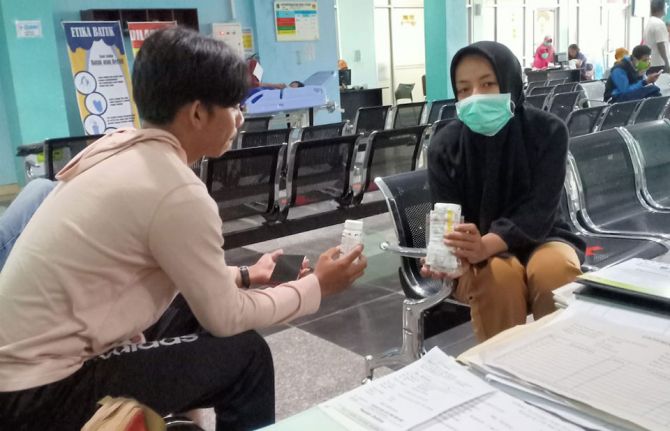
Press Release
Benefits of continuing to provide life-saving HIV services outweigh the risk of COVID-19 transmission by 100 to 1
13 April 2021 13 April 2021Disruption to HIV services as high as 75% has been reported in some countries—to prevent increased AIDS-related deaths, HIV services must continue during the COVID-19 pandemic
GENEVA, 13 April 2021—UNAIDS and the World Health Organization (WHO) have supported mathematical modelling to establish the benefits of continuing HIV services compared to the potential harm of additional COVID-19 transmission. The analysis shows that maintaining HIV services would avert between 19 and 146 AIDS-related deaths per 10 000 people over a 50-year time horizon, while the additional COVID-19-related deaths from exposures related to HIV services would be 0.002 to 0.15 per 10 000 people. The analysis demonstrates that the benefits of continuing to provide HIV services during the COVID-19 pandemic far outweigh the risk of additional COVID-19-related deaths.
“The world should make investments now that don’t leave it with such stark trade-offs in the future,” said Peter Ghys, Director, Strategic Information and Evaluation, UNAIDS. “We need to build robust future systems for health that recognize community-led contributions as part and parcel of a resilient system, not as an afterthought.”
The analysis looked at disruptions to four key HIV services: voluntary medical male circumcision, HIV diagnostic testing, viral load testing and programmes to prevent mother-to-child transmission of HIV. It compared COVID-19 deaths in 2020 and 2021 among health workers and clients due to keeping HIV services open with averted AIDS-related deaths occurring now and over the next 50 years due to maintenance of services. The models were applied to countries with a range of HIV and COVID-19 epidemics.
The COVID-19 pandemic has caused widespread disruption to health services, with restrictions in population movements and health services suspended or limited in many countries. The analysis shows that the potential harm of additional COVID-19 transmission occurring in HIV health services needs to be carefully balanced against the benefits of those services, which, the analysis shows, include fewer AIDS-related deaths. These results may seem intuitive, but it is important to realize that some services have been closed to protect people living with HIV from exposure to COVID-19 and its potential lethal outcomes. However, the risk of not keeping those essential HIV services open entails a greater overall risk of death related to lack of prevention of HIV, access to diagnosis and eventual treatment—these trade-offs are unacceptable.
While there is some additional short-term risk of COVID-19 transmission associated with providing HIV services, the risk of additional COVID-19 deaths is at least 100 times less than the AIDS-related deaths averted by continuing those services. Additional effort to encourage health-care seeking for HIV services during the ongoing COVID-19 pandemic may be needed.
“Ministries of health take into account many factors in deciding when and how to offer essential health services during the COVID-19 pandemic,” said Meg Doherty, Director of WHO’s Global HIV, Hepatitis and Sexually Transmitted Infections Programmes. “This work shows that taking the longer view, the benefits of continuing key HIV services are far larger than the risks of additional COVID-19 transmission; innovative and safe delivery of services must continue as the pandemic is brought under control.”
The full analysis can be found on medrxiv at: https://doi.org/10.1101/2021.03.01.21252663
UNAIDS
The Joint United Nations Programme on HIV/AIDS (UNAIDS) leads and inspires the world to achieve its shared vision of zero new HIV infections, zero discrimination and zero AIDS-related deaths. UNAIDS unites the efforts of 11 UN organizations—UNHCR, UNICEF, WFP, UNDP, UNFPA, UNODC, UN Women, ILO, UNESCO, WHO and the World Bank—and works closely with global and national partners towards ending the AIDS epidemic by 2030 as part of the Sustainable Development Goals. Learn more at unaids.org and connect with us on Facebook, Twitter, Instagram and YouTube.
Contact
UNAIDS GenevaMichael Hollingdale
tel. +41 79 500 2119
HollingdaleM@unaids.org
UNAIDS Media
tel. +41 22 791 4237
communications@unaids.org
Our work
Press centre
Download the printable version (PDF)


Press Release
UNAIDS Board adopts new global AIDS strategy which paves the way to end AIDS by 2030
25 March 2021 25 March 2021The new Global AIDS Strategy 2021–2026, End Inequalities, End AIDS, is a bold approach that uses an inequalities lens to close the gaps preventing progress to end AIDS
GENEVA, 25 March 2021—The UNAIDS Programme Coordinating Board (PCB) has adopted by consensus a new Global AIDS Strategy 2021–2026 to get every country and every community on track to end AIDS as a public health threat by 2030. The strategy was adopted by the PCB during a special session, chaired by the Minister of Health of Namibia, held on 24 and 25 March 2021.
The Global AIDS Strategy 2021–2026, End Inequalities, End AIDS, uses an inequalities lens to close the gaps preventing progress to end AIDS and sets out bold new targets and polices to be reached by 2025 to propel new energy and commitment to ending AIDS. The UNAIDS Secretariat and its 11 Cosponsors worked to develop the new strategy, which received inputs from more than 10 000 stakeholders from 160 countries.
“This year marks 40 years since the first cases of AIDS were reported and 25 years since the establishment of UNAIDS. We are at a critical moment in our historic effort to end AIDS,” said Winnie Byanyima, Executive Director of UNAIDS. “Like HIV before it, COVID-19 has shown that inequality kills. COVID-19 has widened existing inequalities that block progress to ending AIDS. That’s why I’m proud that our new strategy places tackling inequalities at its heart. We must seize this moment to ensure health equality for all in order to beat COVID-19 and end AIDS.”
The strategy puts people at the centre and aims to unite all countries, communities and partners across and beyond the HIV response to take prioritized action to transform health and life outcomes for people living with and affected by HIV. The three strategic priorities are to: (1) maximize equitable and equal access to comprehensive people-centred HIV services; (2) break down legal and societal barriers to achieving HIV outcomes; and (3) fully resource and sustain HIV responses and integrate them into systems for health, social protection and humanitarian settings.
“The World Health Organization is pleased to endorse the global AIDS strategy for the next five years, with its ambitious vision for ending gender inequalities and realizing human rights, including the right to health, calling upon all partners and stakeholders in the HIV response in every country to transform unequal gender norms and end stigma and discrimination,” said Tedros Adhanom Ghebreyesus, Director-General of the World Health Organization and chair of the UNAIDS Committee of Cosponsoring Organizations. “For this strategy to be fully realized, WHO will continue to support all countries to strengthen health systems and especially primary health care, on the road towards universal health coverage.”
If the targets and commitments in the strategy are achieved, the number of people who newly acquire HIV will decrease from 1.7 million in 2019 to less than 370 000 by 2025 and the number of people dying from AIDS-related illnesses will decrease from 690 000 in 2019 to less than 250 000 in 2025. The goal of eliminating new HIV infections among children will see the number of new HIV infections drop from 150 000 in 2019 to less than 22 000 in 2025.
“I applaud the joint efforts in the global AIDS response. At this critical point in efforts to end AIDS as a global health threat by 2030, I call on all countries to support this strategy to get the global AIDS response back on track,” said Kalumbi Shangula, Minister of Health of Namibia and PCB Chair.
HIV prevention for key and priority populations receives unprecedented urgency and focus in the strategy, which calls on countries to utilize the full potential of HIV prevention tools, especially for adolescent girls and young women in sub-Saharan Africa, sex workers, people who inject drugs, gay men and other men who have sex with men, transgender people and people in prison settings.
“The Global Network of People Living with HIV (GNP+) fully supports the Global AIDS Strategy 2021–2026. The strategy’s life-saving framework for ending inequalities is fundamental to ending the AIDS epidemic and achieving the Sustainable Development Goals,” said Alexandra Volgina, Program Manager, GNP+.
The strategy is based on human rights, gender equality and dignity, free from stigma and discrimination for all people living with and affected by HIV, and is the result of extensive analysis of HIV data and an inclusive process of consultation with countries, communities and partners.
Achieving the goals and targets of the new strategy will require annual HIV investments in low- and middle-income countries to rise to a peak of US$ 29 billion by 2025. The total resource needs for lower-income- and lower-middle-income countries is around US$ 13.7 billion. Donor resources are mainly needed for low-income and lower-middle-income countries, while in upper-middle-income countries, which account for 53% of the investments needed, domestic resources are the predominant source of funding.
For more information: End Inequalities. End AIDS. UNAIDS Global AIDS Strategy 2021-2026
UNAIDS
The Joint United Nations Programme on HIV/AIDS (UNAIDS) leads and inspires the world to achieve its shared vision of zero new HIV infections, zero discrimination and zero AIDS-related deaths. UNAIDS unites the efforts of 11 UN organizations—UNHCR, UNICEF, WFP, UNDP, UNFPA, UNODC, UN Women, ILO, UNESCO, WHO and the World Bank—and works closely with global and national partners towards ending the AIDS epidemic by 2030 as part of the Sustainable Development Goals. Learn more at unaids.org and connect with us on Facebook, Twitter, Instagram and YouTube.
Contact
UNAIDS GenevaSophie Barton-Knott
tel. +41 79 514 68 96
bartonknotts@unaids.org
UNAIDS Media
tel. +41 22 791 4237
communications@unaids.org
New Global AIDS Strategy... ending inequalities, ending AIDS
How do we get more people on HIV treatment? And eliminate HIV infections among children?
Press centre
Download the printable version (PDF)


Press Release
UNAIDS Executive Director, Winnie Byanyima, meets with President of Nigeria, Muhammadu Buhari
10 March 2021 10 March 2021ABUJA/GENEVA, 10 March 2021—The UNAIDS Executive Director, Winnie Byanyima, has met the President of Nigeria, Muhammadu Buhari, to discuss the country’s response to the colliding pandemics of HIV and COVID-19. The meeting was part of Ms Byanyima’s three-day visit to the country, which also included visits to communities on the frontline of the response and events to mark International Women’s Day on 8 March.
During their meeting, Ms Byanyima thanked Mr Buhari for being an early champion of the People’s Vaccine campaign, which is calling for a fair and equitable distribution of vaccines against the coronavirus to ensure that poorer countries are not left behind in the response. Nigeria began to vaccinate frontline health workers last weekend after taking delivery of 4 million doses of vaccine, facilitated through COVAX, the international mechanism set up to bulk buy vaccines and distribute them equitably worldwide. Of 300 million vaccine doses administered worldwide so far, most have been administered in just 10 countries.
Ms Byanyima also applauded the country’s progress against the HIV pandemic and said UNAIDS stood ready to strengthen its partnership with Nigeria to further reduce the impact of the HIV pandemic and end AIDS as a public health threat as part of the 2030 Agenda for Sustainable Development.
“Nigeria has made good progress on expanding the delivery of HIV testing, treatment and care services over recent years, contributing to a steep decline in AIDS-related deaths,” said Ms Byanyima. “I look forward to reinforcing UNAIDS’ partnership with government, communities and all other stakeholders to drive new HIV infections down and kick-start a decade of action to end AIDS as a public health threat for everyone.”
There were 1.8 million people living with HIV in Nigeria in 2019 and 1.3 million people know their HIV status. Around 1.1 million people are now on HIV treatment to keep them alive and well. AIDS-related deaths have fallen by more than a third over the past decade, although HIV infections have declined at a more modest rate.
During her visit, Ms Byanyima also met community activists, who have been instrumental in minimizing the disruption to HIV testing, treatment and care services despite the challenges caused by the COVID-19 pandemic and the measures taken to contain it.
On Monday, Ms Byanyima took part in events to commemorate International Women’s Day hosted by the Federal Minister of Women’s Affairs, Pauline Tallen. Ms Byanyima stressed the importance of women’s leadership and participation at all levels of decision-making to ensure that issues of importance to women, such as ending gender-based violence and expanding access to essential services, including health and education, were addressed.
UNAIDS
The Joint United Nations Programme on HIV/AIDS (UNAIDS) leads and inspires the world to achieve its shared vision of zero new HIV infections, zero discrimination and zero AIDS-related deaths. UNAIDS unites the efforts of 11 UN organizations—UNHCR, UNICEF, WFP, UNDP, UNFPA, UNODC, UN Women, ILO, UNESCO, WHO and the World Bank—and works closely with global and national partners towards ending the AIDS epidemic by 2030 as part of the Sustainable Development Goals. Learn more at unaids.org and connect with us on Facebook, Twitter, Instagram and YouTube.
Contact
UNAIDS AbujaTemitope Fadiya
tel. +234 802 366 0244
temitopef@unaids.org
UNAIDS Geneva
Michael Hollingdale
tel. +41 79 500 2119
hollingdalem@unaids.org
Region/country

Press Release
UNAIDS Board concludes with key decisions taken related to the colliding epidemics of HIV and COVID-19
23 December 2020 23 December 2020GENEVA, 23 December 2020— The virtual 47th meeting of the UNAIDS Programme Coordinating Board (PCB) has concluded with important decisions relating to the HIV response, the COVID-19 epidemic, and the ongoing transformation of UNAIDS.
In her opening remarks to the PCB, UNAIDS Executive Director, Winnie Byanyima, thanked the United States of America for chairing the meeting and for its continued leadership in the AIDS response. In her report to the PCB on the state of the HIV epidemic, Ms Byanyima described a mixed picture of progress for some and inequality, stalled or growing danger from HIV for others. With the UNAIDS 2020 targets unmet, she warned that COVID-19 threatened to blow the HIV response even further off-track and called on the world to tackle the long-term fragilities, inequalities and injustices which continue to drive the HIV epidemic.
“A second pandemic in COVID-19 now makes the situation immeasurably more complex,” said Ms Byanyima, “Our choices are stark: get back on track by tackling inequality rapidly and head on, with the expectation that progress for some can be realized by all, or watch as we slip further behind.”
In a special address, the United Nations Deputy Secretary-General, Amina Mohammed, said that people living with HIV, key populations and community-led organizations were critical to helping shape the future of the AIDS response. She urged the PCB to prioritize the adoption of the new UNAIDS strategy with its ambitious 2025 targets so that it could inform preparations for the United Nations General Assembly High-Level Meeting on Ending AIDS expected to be held in June 2021.
“We need political will and renewed commitment to adopt this strategy, to fully fund the global AIDS response, and to fully fund UNAIDS. Together let us make this decade of action also the decade we end AIDS,” said Ms Mohammed.
During the meeting, Ms Byanyima thanked Sweden and Germany for announcing significant financial contributions to support the work of UNAIDS, demonstrating their ongoing support for the organization. The PCB concluded with a thematic segment on cervical cancer and HIV with a special address from the First Lady of Namibia, Monica Geingos.
The PCB elected Namibia as its Chair for 2021, with Thailand to serve as vice-chair and the United States of America as rapporteur.
The report to the Board by the UNAIDS Executive Director and the PCB’s decisions can be found at unaids.org/en/whoweare/pcb/47.
UNAIDS
The Joint United Nations Programme on HIV/AIDS (UNAIDS) leads and inspires the world to achieve its shared vision of zero new HIV infections, zero discrimination and zero AIDS-related deaths. UNAIDS unites the efforts of 11 UN organizations—UNHCR, UNICEF, WFP, UNDP, UNFPA, UNODC, UN Women, ILO, UNESCO, WHO and the World Bank—and works closely with global and national partners towards ending the AIDS epidemic by 2030 as part of the Sustainable Development Goals. Learn more at unaids.org and connect with us on Facebook, Twitter, Instagram and YouTube.
Contact
UNAIDS GenevaMichael Hollingdale
tel. +41 79 500 2119
hollingdalem@unaids.org
UNAIDS Media
tel. +41 22 791 4237
communications@unaids.org

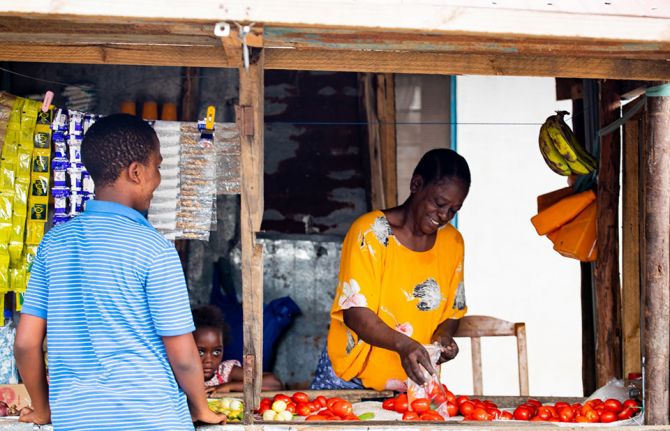
Press Release
Fund to help key populations during COVID-19 launched
10 December 2020 10 December 2020GENEVA, 10 December 2020—UNAIDS announces the launch of its Solidarity Fund, which will support social entrepreneurs and micro-business owned by key populations facing special hardship during the COVID-19 pandemic.
“Key populations are among those disproportionally impacted by COVID-19,” said Winnie Byanyima, UNAIDS Executive Director. “COVID-19 has highlighted and exacerbated the profound and widening economic and social inequalities. We must act to support and protect the people who are most impacted by the pandemic.”
Experience from the COVID-19 and HIV pandemics, and from other diseases, such as Ebola, has shown that key populations are more likely to be impacted by food insecurity, face barriers to health care and access to medicines, and suffer losses of livelihood, unemployment, homelessness and domestic violence.
Launched today, Human Rights Day, the new Solidarity Fund will support social entrepreneurs and small-scale businesses owned by people living with HIV, women or members of key populations, including sex workers, transgender people, people who use drugs and gay men and other men who have sex with men, the people who so often have their human rights violated.
“The fund will help bridge the gap between aspirations and opportunities of people from my community. It places trust and gives us a chance to show our innovation and entrepreneurship with no limitations,” said Maite Schneider, the cofounder and Chief Executive Officer of TransEmpregos.
To be piloted initially in five countries—Brazil, Ghana, India, Madagascar and Uganda—with a US$ 250 000 budget from UNAIDS, the initiative will scale up to additional countries over the coming months, with a goal of raising an additional US$ 3 million to US$ 5 million in 2021–2022.
UNAIDS will closely work with community networks, national innovation ecosystems, the private sector and other partners to create tailored support, especially capacity development on social entrepreneurship and mentoring to enhance the sustainability of social ventures and impact for the wider community, with special attention given to young key populations.
Among the partners is the venture development and investment platform Social Alpha, which will provide mentoring and entrepreneur support to the chosen beneficiaries. “We look forward to partner with communities and UNAIDS on the Solidarity Fund and leverage our experience in working with social entrepreneurs for solving complex social, economic and environmental challenges,” said Manoj Kumar, the Chief Executive Officer and founder of Social Alpha.
UNAIDS
The Joint United Nations Programme on HIV/AIDS (UNAIDS) leads and inspires the world to achieve its shared vision of zero new HIV infections, zero discrimination and zero AIDS-related deaths. UNAIDS unites the efforts of 11 UN organizations—UNHCR, UNICEF, WFP, UNDP, UNFPA, UNODC, UN Women, ILO, UNESCO, WHO and the World Bank—and works closely with global and national partners towards ending the AIDS epidemic by 2030 as part of the Sustainable Development Goals. Learn more at unaids.org and connect with us on Facebook, Twitter, Instagram and YouTube.
Contact
UNAIDS GenevaSophie Barton-Knott
tel. +41 79 514 68 96
bartonknotts@unaids.org
UNAIDS Media
tel. +41 22 791 4237
communications@unaids.org
Press centre
Download the printable version (PDF)

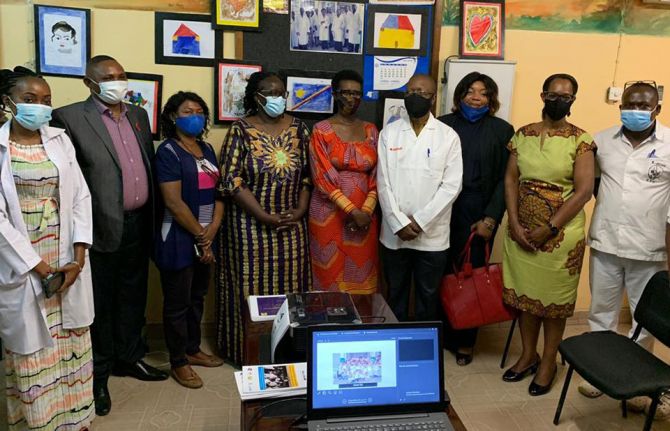
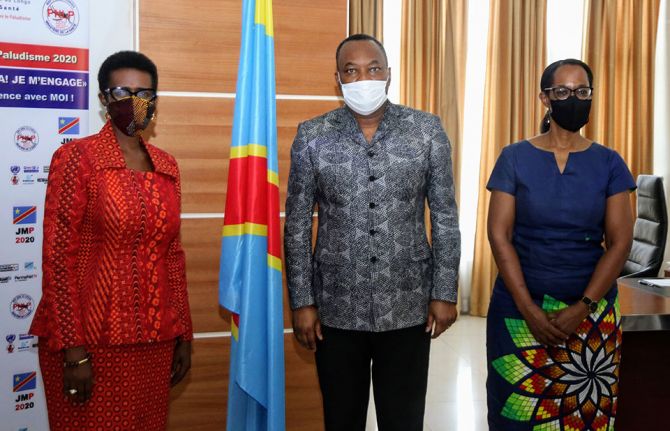
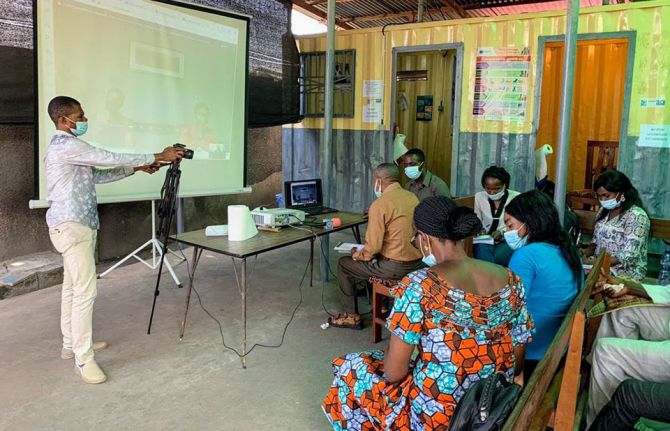
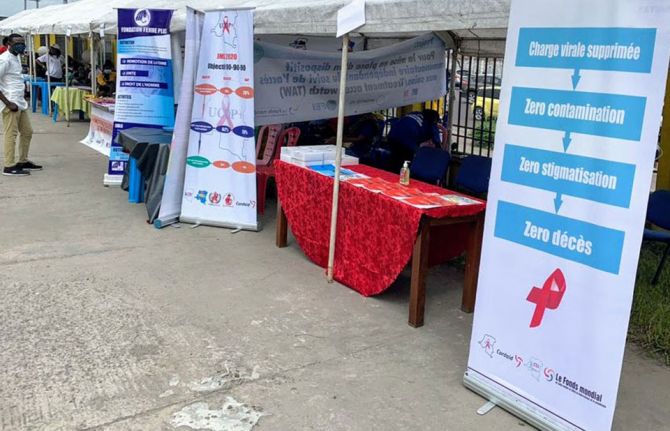
Press Release
UNAIDS calls on more to be done for paediatric HIV treatment in the Democratic Republic of the Congo
02 December 2020 02 December 2020On World AIDS Day, the UNAIDS Executive Director visited an HIV community village and a children’s hospital
Kinshasa, 2 December 2020—UNAIDS Executive Director Winnie Byanyima visited an HIV community village in Kinshasa as part of the World AIDS Day ceremonies in the capital of the Democratic Republic of the Congo. She commended the country on its vast experience in responding to pandemics such as Ebola after the country announced the end of the latest Ebola outbreak on 18 November.
“I thank the Congolese government, our friends from civil society and partners who together have enabled the country to respond to its many challenges, particularly HIV, Ebola and now COVID-19,” said Ms Byanyima.
Ms Byanyima stressed that more people in the country need life-saving HIV treatment and that more needs to be done to support women in particular. “Despite considerable progress, only 57% of people living with HIV are on antiretroviral therapy,” Ms Byanyima said. “Coverage of antiretroviral therapy is higher among men (72%) than among women (51%), a real sign of gender inequality.” She added that if women do not feel safe to disclose their HIV status or feel that they will be supported or accepted if they are living with HIV, they will not enrol onto HIV treatment.
Out of the 520 000 people living with HIV in the Democratic Republic of the Congo, more than 64% are women. There are 68 000 children under the age of 14 years who are living with HIV in the country, of whom only 25% are on treatment, which is why Ms Byanyima called on the country to accelerate paediatric care, including HIV services.
At the Kalembelembe Children’s Hospital she spoke to staff and adolescents who have grown up accessing care and support at its paediatric centre. The adolescents asked the Executive Director to continue to advocate for funding to maintain peer support groups for adolescents living with HIV, the elimination of user fees, the inclusion of all adolescents living with HIV in education and the elimination of legal barriers requiring parental consent for HIV testing for adolescents.
HIV in the Democratic Republic of the Congo, like in the rest of sub-Saharan Africa, particularly affects young women. Ms Byanyima reiterated that to end AIDS, the focus must be put on women and girls. “Every week, 4500 young women in sub-Saharan Africa are infected with HIV,” she said. “This is unacceptable, we need to make a radical difference in the response to HIV.”
Upon her arrival in Kinshasa, Ms Byanyima met with the Minister of Health, Eteni Longondo. She congratulated him on his leadership in responding to COVID-19 and shared her concerns about keeping HIV at the top of the agenda, despite the multitude of pressures of the three colliding pandemics of Ebola, HIV and COVID-19.
AIDS-related deaths in the Democratic Republic of the Congo have dropped by 61% in the past 10 years, from 37 000 in 2010 to 15 000 in 2019. HIV prevalence hovers around 1% among adults, but 23 000 people became newly infected with HIV last year.
Bold ambitious targets
UNAIDS’ new report, Prevailing against pandemics by putting people at the centre, calls on countries to make far greater investments in global pandemic responses and to adopt a new set of bold, ambitious but achievable HIV targets. If those targets are met, the world will be back on track to ending AIDS as a public health threat by 2030.
The global AIDS response was off track before the COVID-19 pandemic hit, but the rapid spread of the coronavirus has created additional setbacks. Modelling of the pandemic’s long-term impact on the HIV response shows that there could be an estimated 123 000 to 293 000 additional new HIV infections and 69 000 to 148 000 additional AIDS-related deaths between 2020 and 2022.
“The collective failure to invest sufficiently in comprehensive, rights-based, people-centred HIV responses has come at a terrible price,” said Winnie Byanyima, Executive Director of UNAIDS. “Implementing just the most politically palatable programmes will not turn the tide against COVID-19 or end AIDS. To get the global response back on track will require putting people first and tackling the inequalities on which epidemics thrive.”
Getting back on track
Although some countries in sub-Saharan Africa, such as Botswana and Eswatini, have done remarkably well and have achieved or even exceeded the HIV targets set for 2020, many more countries are falling way behind. The high-performing countries have created a path for others to follow. UNAIDS has worked with its partners to distil those lessons into a set of proposed targets for 2025 that take a people-centred approach.
The targets focus on a high coverage of HIV and reproductive and sexual health services together with the removal of punitive laws and policies and on reducing stigma and discrimination. They put people at the centre, especially the people most at risk and the marginalized—young women and girls, adolescents, sex workers, transgender people, people who inject drugs and gay men and other men who have sex with men.
New HIV service delivery targets aim at achieving a 95% coverage for each sub-population of people living with and at increased risk of HIV. By taking a person-centred approach and focusing on the hotspots, countries will be better placed to control their epidemics.
The 2025 targets also require ensuring a conducive environment for an effective HIV response and include ambitious antidiscrimination targets so that less than 10% of countries have punitive laws and policies, less than 10% of people living with and affected by HIV experience stigma and discrimination and less than 10% experience gender inequality and violence.
